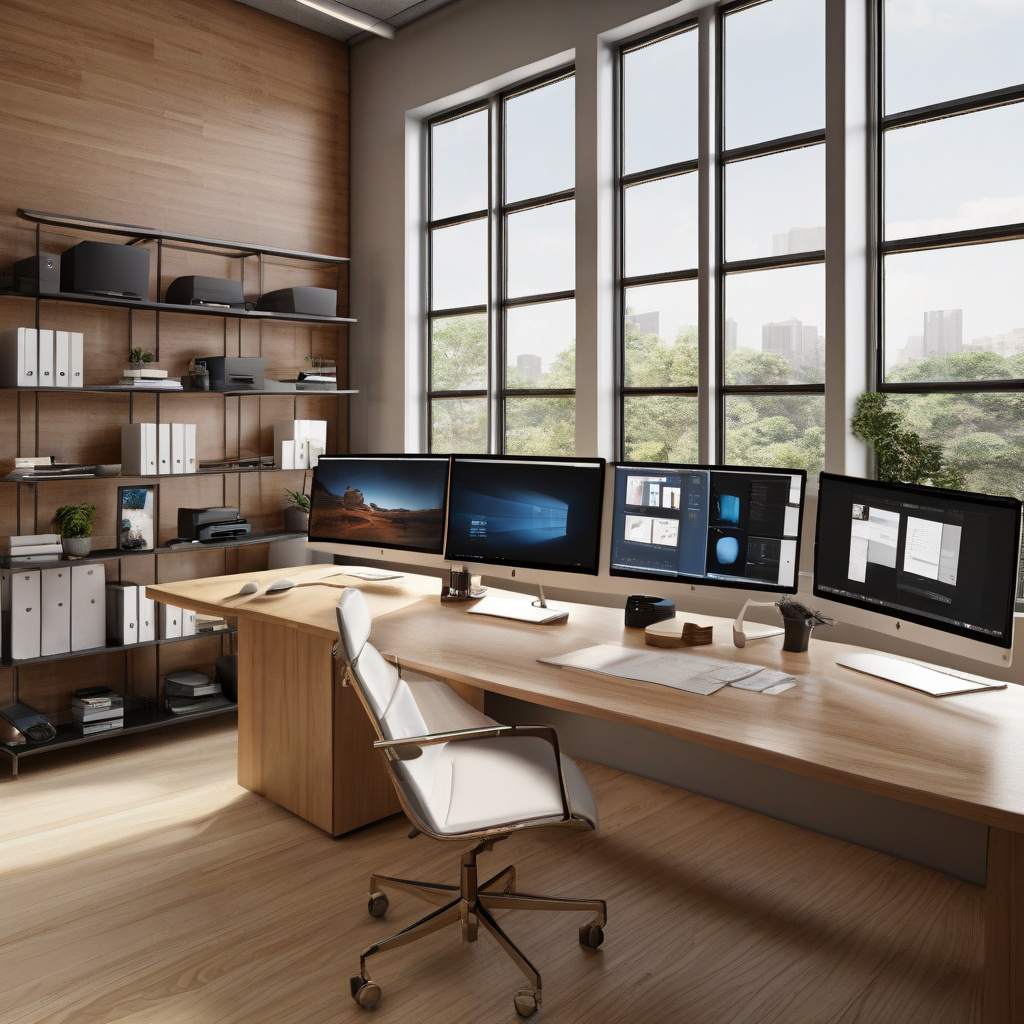The Ultimate Guide to Using Multiple Monitors with Windows
Are you tired of squinting at a single screen while working on your Windows PC? Whether you’re using a laptop or a desktop, the good news is that setting up multiple monitors is easier than ever. Not only does it boost your productivity, but it also enhances your overall computing experience. Let’s delve into the ultimate guide on how to make the most out of using multiple monitors with Windows.
Your Multiple Monitor Hardware
The first step in setting up a second monitor is identifying the outputs your PC offers. For laptops, check the available ports like HDMI, DisplayPort, or USB-C. If you have a desktop PC, chances are you already have the necessary ports at the back. You can even opt for portable monitors that connect via USB-C for a convenient on-the-go setup. Additionally, investing in a docking station can streamline the connection of your peripherals to your laptop and monitor, providing a seamless user experience.
The TV Possibility
Did you know that your TV can double up as an effective second monitor for your laptop? By connecting it with an HDMI cable or using wireless projection features, you can easily extend your display real estate. While wireless projection offers convenience, a wired connection ensures faster and crisper display quality. Windows allows you to project your screen onto different displays with just a few clicks, expanding your workspace options effortlessly.
The Windows Second Monitor Software Setup
Setting up multiple monitors on Windows is a breeze. Simply plug in your monitors, navigate to the Settings app, and head to System > Display. From there, you can arrange your monitors, adjust text scaling, and choose how Windows handles your displays. Ensure to designate the correct monitor as your primary display for seamless functionality. Adjusting screen resolution settings and refresh rates can further optimize your viewing experience, enhancing clarity and smoothness.
The Projection and Taskbar Factors
Once your external monitor is connected, explore various ways to utilize it effectively. You can continue using it as a secondary or primary monitor, or transform your laptop into a desktop setup by powering off the screen. Windows offers convenient projection options to manage your displays efficiently. Customizing your taskbar across multiple monitors allows for a tailored user experience. Windows 11’s enhanced capabilities simplify the transition between single and multimonitor modes, ensuring a seamless workflow.
Advanced Windows Multimonitor Tricks
Beyond basic multimonitor functionality, Windows offers advanced features to maximize productivity. Leveraging Snap features and tools like FancyZones PowerToy can enhance window management on multiple monitors. PowerToys Workspaces enable you to save and launch customized layouts effortlessly. Additionally, adjusting taskbar orientation and utilizing third-party apps can further personalize your multimonitor setup. By exploring these advanced tricks, you can optimize your workflow and create a tailored computing environment that suits your preferences.
Your Perfect Multimonitor Setup
As you experiment with multiple monitors, start with a simple setup using existing displays or budget-friendly options. Consider innovative solutions like monitor arms for improved ergonomics and flexibility. Exploring portrait mode or ultrawide monitors can cater to specific preferences, providing a customized viewing experience. Whether you prefer a multi-screen setup or an ultrawide display, the flexibility offered by Windows PCs ensures a seamless transition and enhanced productivity. Embrace the vast screen real estate that multiple monitors provide, making your computing experience both efficient and enjoyable.
In conclusion, utilizing multiple monitors with Windows opens up a world of possibilities for enhanced productivity and user experience. By leveraging hardware options, software configurations, and advanced tricks, you can create a tailored multimonitor setup that meets your specific needs. Whether you opt for a traditional dual-monitor setup or explore innovative display solutions, Windows empowers you to customize your workspace and elevate your computing experience. So, why limit yourself to a single screen when you can unlock the full potential of multiple monitors with Windows?

